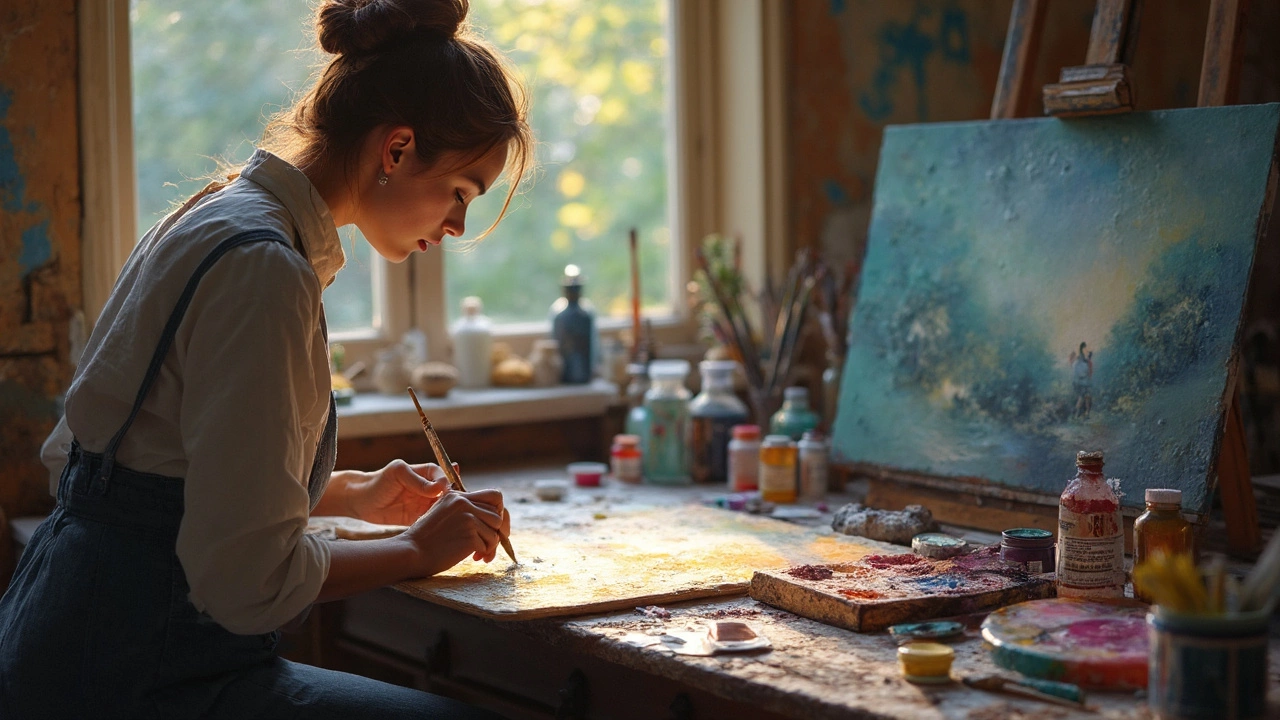What Is Scumbling and When to Use It?
Scumbling is a quick, loose brushwork that lays a thin, semi‑transparent layer of paint over a dried base. It creates a soft, hazy texture and lets the colors underneath peek through. Artists use it to add atmosphere, suggest depth, or give a surface a gritty feel without repainting the whole area.
How Scumbling Differs From Glazing
Both scumbling and glazing involve thin layers, but they work opposite ways. In glazing you apply a clear or thinly mixed pigment over a dried layer, letting the base shine through cleanly. Scumbling, on the other hand, uses a dry, thick brushstroke that rubs paint onto the surface, breaking up the underpainting and creating a broken‑color effect. Think of glazing as a glossy veil, and scumbling as a chalky dusting.
Step‑by‑Step Scumbling for Oil Paintings
1. Let the underlayer dry. A fully dry surface makes the scumble stick without blending too much.
2. Choose a dry brush. A flat or filbert brush with stiff bristles works best. Dip only the tip into paint – you don’t want a saturated brush.
3. Pick the right paint. Use opaque colors mixed with a little medium (linseed oil or a fast‑drying medium) to keep the layer thin.
4. Apply with a light hand. Scrape the brush across the surface in short strokes. The paint will sit on top of the dried layer, creating a broken texture.
5. Blend only where needed. If you see harsh edges, gently feather them with a clean, dry brush.
6. Step back and evaluate. Scumbling is all about subtlety. Add more layers only if the effect feels flat.
For acrylics the process is the same, but you can speed up drying with a hair dryer or a quick‑dry medium. The key is keeping the brush dry enough to leave a stippled finish.
Common Mistakes and Quick Fixes
Too much paint. If the scumble looks muddy, lightly wipe the area with a clean rag and re‑apply a thinner layer.
Uneven texture. Use a fan brush or a stippling brush to even out the surface. Light, random strokes give a natural look.
Wrong colors. Scumbling works best with complementary or slightly muted hues. Bright colors can overpower the underpainting and lose the hazy effect.
When to Use Scumbling in Your Art
Use scumbling for skies, distant foliage, or any area where you want to suggest depth without detail. It’s also great for creating a sense of age on old‑look portraits or adding a weathered texture to architecture.
If you’re fixing a mistake in an oil painting (see our post on "How to Fix Mistakes in Oil Painting"), a scumble can blend an unwanted spot into the surrounding tones without a full repaint.
Experiment with different brush shapes and pressures. The more you play, the better you’ll understand how scumbling can transform a flat surface into a lively, textured piece.
Remember, scumbling is a tool, not a rule. Use it when it serves your vision, and don’t be afraid to combine it with glazing, dry brushing, or other techniques for richer results.

21 May 2025
Ever wondered why some paintings seem to glow or have a magical softness? Scumbling might be the secret. This technique adds layers of life to your artwork by letting bits of color peek through. It's not tricky, but it can totally change the look of your painting. Discover how to use scumbling in oil painting, what tools work best, and why even the Old Masters loved this trick.
Continue reading...
